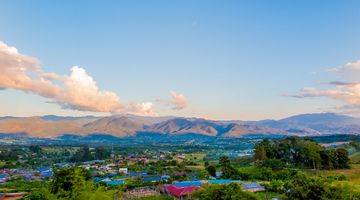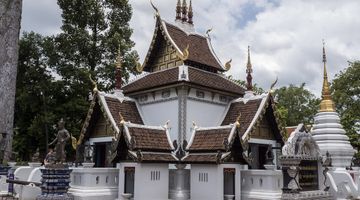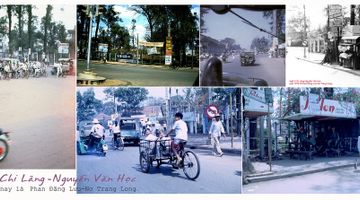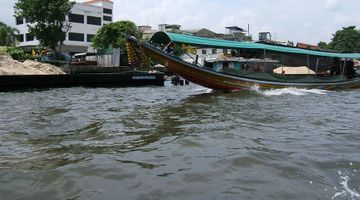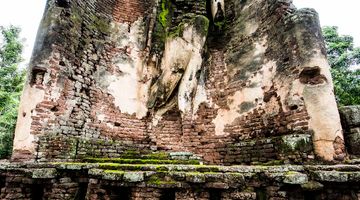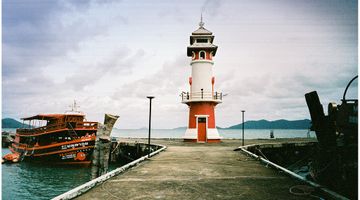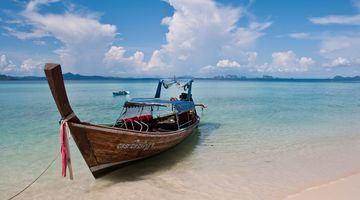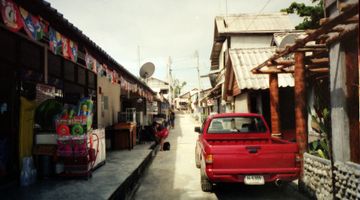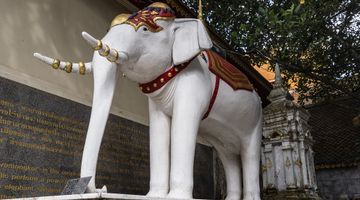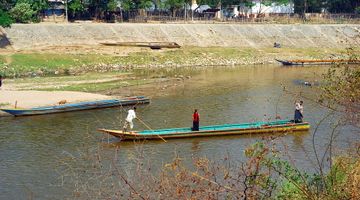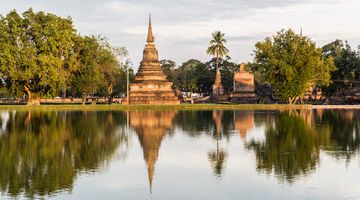Pai Travel Guide
In a nutshell
Pai has fast become one of Thailand’s most enticing destinations for the free-spirited traveller and tourist.
Why go to Pai
Located up in the mountains of the northern Mae Hong Son province, near the Myanmar border, its seclusion offers an escape from the hustle and bustle of other popular destinations such as Bangkok and Chiang Mai (just 3 hours away) with its stunning natural beauty; sprawling rice terraces, waterfalls, hot springs, and impressive canyon.
Pai invites people from all walks of life, with endless outdoor activities, budget to luxury accommodation, as well as eateries galore. No matter if you’re there for 2 days or 2 weeks, no one is immune to Pai’s allure.
Pai’s picturesque scenery is the number one reason to visit, however, many travellers also head north to immerse themselves in the carefree bohemian attitude it’s so famous for, where people often wander the streets barefoot, and intermingle with the locals at ease.
Pai’s Walking Street is its main hub, lined with artisanal shops, delicious restaurants and cafes, and a night market which comes alive at dusk. Within thirty minutes of the main town you can drive to a number of beautiful waterfalls, tucked away amid the mountains, watch the sunset at the canyon, or climb the (many!) steps to Wat Phra That Mae Yen to visit the huge white buddha and take in views over the surrounding area. There’s also the historic Pai Memorial Bridge which you pass on the way if you are coming from Chiang Mai, dating back to the Second World War.
When to go to Pai
The best time to visit Pai is in the early wet season at the end of the year when the temperature is pleasantly cool and you can enjoy the lush verdant landscapes of the thriving rice paddies without there being too many tropical downpours.
This time is also when the waterfalls and rivers are at their fullest so you can enjoy a cooling dip in the fresh waters after an adventurous hike.
In the hotter months, the area is very dry and hazy so you’ll miss out on some of the beautiful views that the cooler months enjoy as most of the vegetation has been burnt and the waterfalls and rivers are much drier.
Where to stay in Pai
Pai’s accommodation used to cater predominantly for the more budget backpacker with its cheap hostels and you could often walk in without booking (though we recommend you book ahead as the best places tend to fill up quickly during the high season).
In recent years, to supply the demand, more mid- and high-range options have popped up to cater for the new visitors to Pai so if you want some affordable luxury you also have plenty to choose from, starting from as little as THB700/USD20 a night.
You can choose to stay in the vibrant Pai town, down by the river, or in one of the many hostels and resorts around the hills with endless views of the mountains.
Where to eat in Pai
Foodies will love Pai. It offers everything from local cuisine, street food, gourmet burgers, authentic Italian pizzas, and more! Whether your personal tastes lie more in the Western world, or if you’re adventurous enough to sample some of the delicacies from the stalls in the night street market, your taste buds will be tingling throughout your stay in Pai.
Food in Pai is generally on the cheaper side, especially if you eat on the street where you can spend as little as a dollar on a delicious pad thai, but even if you dine in one of the ‘fancier’ restaurants – of which there are plenty – you can look to spend around THB700/USD20 max for a dinner for two, usually including a few drinks, as well.
How to get around Pai
The main mode of transportation in Pai is the scooter. Many first-timers brave the quieter rural roads of Pai to familiarise themselves with this two-wheeled beast, but they soon come to love their new trusty companion. You can rent a scooter for around THB150/USD5 a day (you might have to pay a small deposit for a helmet) and usually leave your passport as insurance.
If scootering isn’t your thing, or you’re wary of driving abroad and sticking to the left side of the road, there are shared taxis (songthaews) that will take you to the popular sights and attractions around the area at an affordable price, even more so if the taxi is full. Just ask the reception at your accommodation to help organise one for you.
How to get to and from Pai
The main – and quickest – route into Pai is from Chiang Mai, three/four hours’ drive in a shared minivan for around THB180/USD6. It makes for an interesting journey and you’re advised to bring travel sickness pills if you are prone to feeling car sick as there are plenty of sharp hairpin bends along the way (762 by some counts!). The drivers are expert and have done this plenty of times before so there’s no need to worry, but if you do, perhaps ask to sit at the front for a more bearable ride.
An alternative journey is to rent a motorbike and drive there yourself – but it’s only recommended for the more experienced drivers.
If you’re not adverse to splashing a bit of cash, there is a local airport where you can fly directly from Chiang Mai with KanAir but you would be looking to pay around USD45 one-way.
Is Pai safe?
Walking down the streets and staying in your accommodation you should feel safe but still exercise the same precautions as you would anywhere with keeping your belongings secure.
Pai is predominantly a carefree hippie town, however, some of the people it draws in like to indulge in drug taking which has meant that over the years the police are tighter with their policing.
Of an evening, it is rare to experience any disturbances, so don’t let you put that off, but it’s always better to be sensible – remember, you are a guest in their country so respect their rules and regulations.
